Through this piece, we’re going to take a look at The potential of foraging a Paleo Diet, and what it is to truly forage for food. What was the true Paleolithic diet, what does the modern paleo diet look like, and what’s the potential for us to eat and live in the modern world off a true hunter-gather diet?
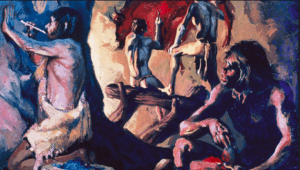
What is a modern paleo diet?
Paleo diets are all about eating as our hunter-gatherer ancestors did. This involves cutting out any cultivated crops such as legumes (including peanuts), cereal grains, refined sugar, potatoes, processed foods, salt, dairy, refined vegetable oils, and root vegetables. There are some variations of the diet that allow low-fat dairy and root veg but generally, the diet consists of lean proteins, fruit, vegetables, and healthy fats from whole foods like seeds, nuts, olive oil, and grass-fed meat.
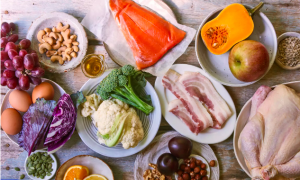
The diet was first promoted by a gastroenterologist, Dr. Walter L Voegtlin. It was his book, The Stone Age Diet, first published in 1975, that led to the many versions of the paleo diet that are around today. They are basically very similar but some are much stricter than others.
What does ‘paleo’ refer to?
‘Paleo’ refers to the Paleolithic era, a time when our human ancestors started to use primitive tools made from stone, bone and other natural materials, also known as The Old Stone Age and it is generally agreed amongst archaeologists that it occurred approximately between 2.58 million- and 10,000-years BP (BP refers to ‘Before Present).
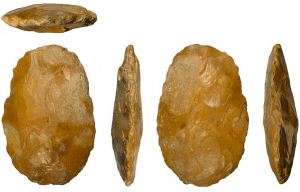
The world as we know it, looked very different then. This period in the history of the Earth coincides with the latter part of the Ice Age. Huge glaciers covered up to 25 to 30% of the Earth’s surface. Where the glaciers stopped permafrost covered large areas of the land and cold deserts formed. Within an ice age there will be shorter cycles of warmer temperatures known as interglacials. During interglacial cycles, significant rises in sea levels would occur and an increase in the spread of vegetation.
Glacial cycles can last between 70,000 and 90,000 years, interglacial cycles between 10,000 and 30,000 years. We are currently living in an interglacial cycle that has continued for the last 11,000 years, (yes, we are living through the most recent interglacial cycle of the current Ice Age).
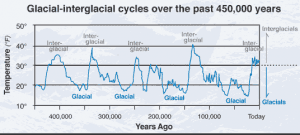
What is truly remarkable, is that our ancestors lived through prolonged periods of extremely cold climates before this current interglacial.
What did our ancestors eat & Forage during the Paleolithic?
Conditions would have been inhospitable to say the least. Human populations were restricted during the glacial cycle to a few areas of the world where flora and fauna were able to survive. There would have been little in the way of vegetation with much nutritional value to eat and that vegetation would have been confined to areas where there was no ice in summer. The animals which were available to hunt, (or scavenge if they were lucky enough to come across one recently deceased), were also much bigger than they are now and a lot of them were also much more dangerous.
Evidence shows that early Human diets consisted almost entirely of meat and, predominantly, in what is now Britain and Europe, it was Mammoth, Reindeer and Woolly Rhinoceros.
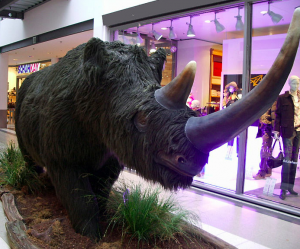
Not only was the food dangerous but also the competition, from roaming packs of Hyenas, Sabre Toothed Cats, Cave Lions and Cave Bears.
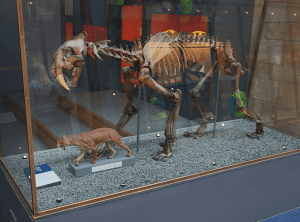
It’s known from archeological records that about 20% of the early Human diet also included plants but this would have been hugely different from the plants available today. It would also have varied massively depending upon what area of the planet they had lived in. In Europe and Britain in particular, people may well have gathered plant foods to supplement their diet, but these alone wouldn’t have come near to supplying the calories required to stay alive for more than a short period.
When thinking about diet during the Paleolithic, it is necessary to also take into consideration the fact that this was a period in which our early Hominid ancestors developed the ability to control fire, make and use increasingly sophisticated tools, began to use language as a means to communicate, not only between their own family groups, but with other family groups and communities. They experienced a change in weather that resulted in the formation of islands due to rising sea levels as the ice receded and the Earth began to heat up. It’s just too simplistic to think that a Paleolithic diet would have looked the same for the whole of that era.
Back to the modern paleo diet
It is a fact that our ancestors would have eaten lots of grass fed meat. They would also, depending upon where in the world they were situated, have eaten varying amounts of plants and mushrooms. It’s now known that our ancestors ate basically whatever they could get their hands on. Neanderthals found in The Spy Cave in Belgium mostly ate Woolly Rhinoceros and wild Sheep, but evidence found on Neanderthals in Spain revealed a diet of tree moss, Pine nuts, mushrooms and some tree bark.
That said, the animals and plants that our ancestors ate during the Paleolithic were hugely different to those we consume now. The animals we eat today are vastly different from then, having undergone intensive breeding to ensure soft, plump flesh with just the required fat content. The fruit, whilst certainly smaller, would have been similar. Animals have been consuming fruit for millennia, in a reciprocal relationship involving seed dispersal in exchange for food. Vegetables, however, are a far cry now from then. Most of the vegetables we now consume have been selected and bred for taste and size and wouldn’t have been around even a couple of hundred years ago. The oils from nuts and seeds would not have been extracted and the fats necessary for survival would have come from animal sources, (remember it was much colder then than now and fat would have been essential, not just for healthy cell function but for energy and insulation).
How can we accurately mimic a paleolithic diet?
The only way we could accurately mimic our Paleolithic ancestors’ diet would be to eat only wild foods. In other words, hunt and gather from the wild. This was attempted by foragers Monica Wilde and Mathew Rooney, in 2020/2021. Monica recorded and published her experience in her book, The Wilderness Cure.
They were fortunate enough to have a neighbour who supplied them with wild venison and other wild meats. Like our ancestors, they had to travel about the country to find enough food to survive, with trips to the coast to collect seaweed and fish for Mackerel. They drove across country to woodland further afield for gathering edible mushrooms. They had to be mobile to survive. They also received donations of wild preserved food from other foragers and frequent gifts of wild venison and other wild meats from a local farmer.
Monica also ate cheese that she made from goats milk, as wild goats would certainly have been around during Paleolithic times. However, our Paleolithic ancestors would not have eaten any dairy produce at all. There is some evidence of food preservation in the Paleolithic, but cheese production was some way off.
Summary of our piece Foraging a Paleo Diet
In summary, to truly revert back to a Paleolithic diet, we have to undergo a complete lifestyle change. Foraging and hunting takes time and with most people in Western societies working 40 hours or more a week, we simply would not be able to survive without supplementing our diets with shop bought food. Add to that the knowledge needed to be able to safely identify edible wild plants and mushrooms, not to mention the ability to hunt enough wild animals and do so within the law.
Perhaps supplementing our diets with wild and foraged food could be an adequate compromise.
References
https://www.bbcgoodfood.com/howto/guide/what-paleo-diet
https://justmeat.co/docs/the-stone-age-diet-walter-l-voegtlin.pdf
https://www.britannica.com/question/What-is-the-Paleolithic-Period
https://factsanddetails.com/world/cat56/sub400/entry-6001.html
https://www.science.org.au/curious/people-medicine/what-did-neanderthals-eat
https://www.nationalgeographic.com/culture/article/prehistoric-dining-the-real-paleo-diet
Britain BC: Life In Britain and Ireland Before The Romans, Francis Pryor, Harper Collins
The Wilderness Cure, Monica Wilde, Simon & Schuster UK





